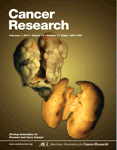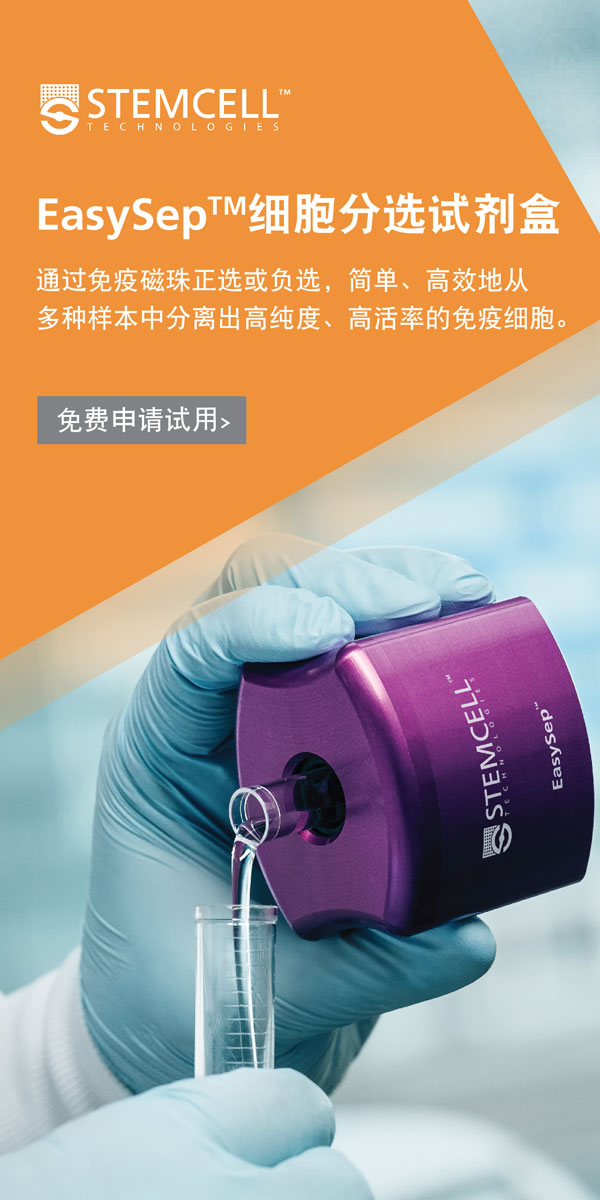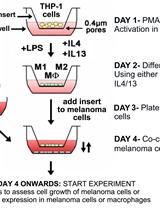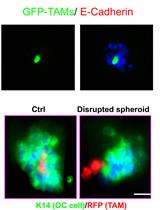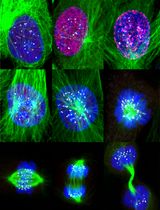- EN - English
- CN - 中文
In vitro Regulatory T cells Differentiation From Naïve T Cells
从初始T细胞到调节性T细胞的体外分化实验
发布: 2014年03月20日第4卷第6期 DOI: 10.21769/BioProtoc.1075 浏览次数: 24174
评审: Lin FangOmar AkilFanglian He
Abstract
In the past years, a subset of regulatory T cells (Tregs) expressing CD4, CD25 and the transcription factor FoxP3 has gained considerable attention as key regulators of T-cell tolerance and homeostasis (Sakaguchi, 2004). This population of T cells is specifically engaged in the maintenance of immune self-tolerance and the control of aberrant immune responses to foreign antigens. Remarkably, regulatory T cells have been implicated in tumor cell evasion of immune responses (Curiel et al., 2004; Zou, 2006) by suppressing T cell mediated antitumor immunity. The study of the signals that promote the differentiation of this suppressive population in the tumor microenvironment has become a central issue. Here we described a detailed method to in vitro differentiate Tregs using tumor cells conditioned media from mouse naïve T cells and to identify them based on their specifics markers (Dalotto-Moreno et al., 2013).
Keywords: Regulatory T cell (调节性T细胞)Materials and Reagents
- Splenocyte suspension
- Eight- to twelve-week old Balb/c mice strain
- RPMI 1640 (Life Technologies, Gibco®, catalog number: 22400-089 )
- Phosphate buffer saline (PBS) (see Recipes)
- Sterile red blood lysis buffer (ACK buffer) (see Recipes)
- Eight- to twelve-week old Balb/c mice strain
- Cell lines
- 4T1 cell line (ATCC)
4T1 is a highly metastatic stage IV murine breast cancer cell line that lacks estrogen and progesterone nuclear receptors and that spontaneously metastasizes to lung, brain and bone.
- RPMI 1640
- Heat-inactivated fetal bovine serum (FBS) (Life Technologies, Gibco®, catalog number: 10438-026 )
- 100x Antibiotic-antimycotic (Life Technologies, InvitrogenTM, catalog number: 15240062 )
- 4T1 cell line (ATCC)
- Determination and purification of CD4+ Treg and naïve T cells
- Allophycocyanin (APC)-conjugated anti-CD4 antibody (clone GK1.5) (eBioscience, catalog number: 17-0041 )
- Alexa Fluor 488-conjugated anti-CD25 antibody (clone PC61.5) (eBioscience, catalog number: 53-0251 )
- Phycoerythrin (PE) -conjugated anti-CD62L antibody (clone MEL-14) (eBioscience, catalog number: 12-0621 )
- PE-conjugated anti-Foxp3 antibody (clone FJK-16s) (eBioscience, catalog number: 12-5773 )
- Fix/Perm buffer (eBioscience, catalog number: 00-5123 , 00-5223 )
- 10x Permeabilization Buffer (eBioscience, catalog number: 00-8333 )
- Dynal® Mouse CD4 Cell Negative Isolation Kit (Life Technologies, InvitrogenTM, catalog number: 114-15D )
- Heat-inactivated fetal bovine serum (FBS) (Life Technologies, Gibco®, catalog number: 10438-026)
- FACS buffer (see Recipes)
- Sorted cells collection medium (see Recipes)
- Allophycocyanin (APC)-conjugated anti-CD4 antibody (clone GK1.5) (eBioscience, catalog number: 17-0041 )
- Differentiation of Treg in vitro
- NA/LE Hamster anti-mouse CD3ε monoclonal antibody (clone 145-2C11) (BD, catalog number: 553057 )
- NA/LE Hamster anti-mouse CD28 monoclonal antibody (clone 37.51) (BD, catalog number: 553294 )
- Antibiotic-antimycotic (Life Technologies, InvitrogenTM, catalog number: 15240062)
- RPMI 1640 supplemented with 50 µM β-mercaptoethanol and antibiotic-antimycotic (Life Technologies, InvitrogenTM, catalog number: 15240062)
- Recombinant hTGFβ1 (R&D Systems, catalog number: 100-B ) (see Recipes)
- Recombinant mIL-2 (R&D Systems, catalog number: 402-ML ) (see Recipes)
- NA/LE Hamster anti-mouse CD3ε monoclonal antibody (clone 145-2C11) (BD, catalog number: 553057 )
Equipment
- One milliliter syringe (BD, catalog number: 309628 )
- Sterile scissors
- P60 petri dishes (Greiner Bio-One GmbH, catalog number: 628160 )
- Sterile 70-μm filter (BD, catalog number: 352350 )
- Syringe filter (0.22 μm) (Corning, catalog number: 431219 )
- FACSAria cell sorter
- FACSAria II (BD, catalog number: 642510 )
- Airstream Class II BSC (ESCO Corporation)
- 15 ml conical tubes (BD, catalog number: 352095 )
- 5 ml polystyrene round bottom tubes (BD, catalog number: 352052 )
- Twenty four well plates (Greiner Bio-One GmbH, catalog number: 662160 )
- Centrifuge 5810R (Eppendorf, catalog number: 5811 000,622 )
- Dynal MCP-L (Life Technologies, InvitrogenTM, catalog number: 120.21D )
- CO2 incubator
Procedure
文章信息
版权信息
© 2014 The Authors; exclusive licensee Bio-protocol LLC.
如何引用
Dalotto-Moreno, T., Rabinovich, G. A. and Salatino, M. (2014). In vitro Regulatory T cells Differentiation From Naïve T Cells. Bio-protocol 4(6): e1075. DOI: 10.21769/BioProtoc.1075.
分类
癌症生物学 > 肿瘤免疫学 > 细胞生物学试验 > 细胞分离和培养
细胞生物学 > 细胞活力 > 细胞增殖
免疫学 > 免疫细胞分离 > 淋巴细胞
您对这篇实验方法有问题吗?
在此处发布您的问题,我们将邀请本文作者来回答。同时,我们会将您的问题发布到Bio-protocol Exchange,以便寻求社区成员的帮助。
Share
Bluesky
X
Copy link




